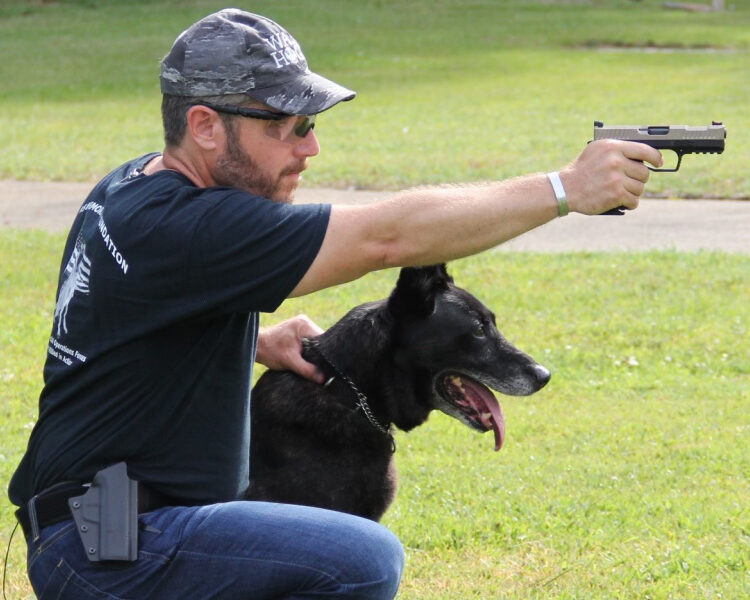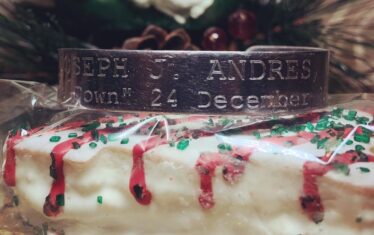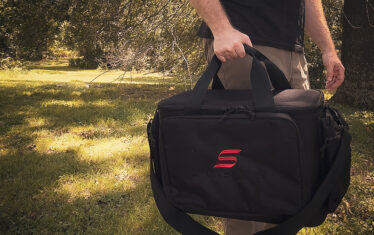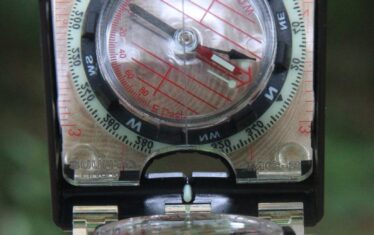As a Special Operations K9 handler, the ability to be able to fire my weapons while having my military working dog attached to my hip was a critical task to ensure survivability on the battlefield.
If you’re a concealed carry holder and dog owner, law enforcement K9 handler, or military K9 handler, have you ever thought about what if you had to shoot your pistol with a leash in your hand? If so, one handed pistol shooting is something you need to add to your dry and live fire marksmanship program.
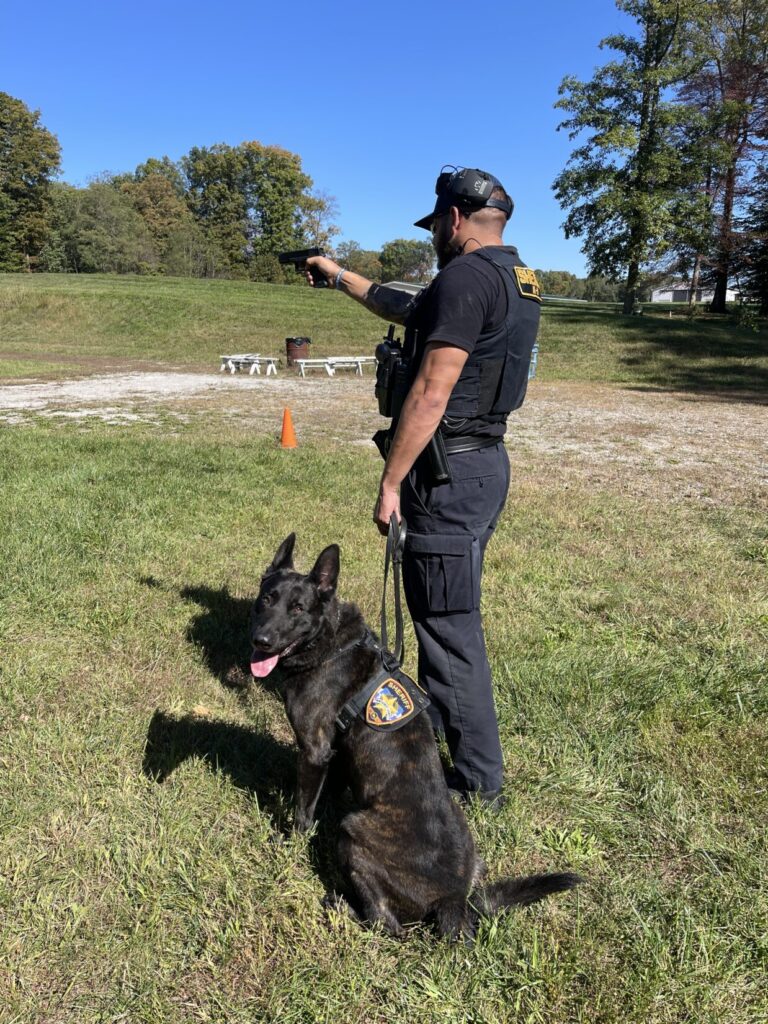
K9 Officer Training: One Handed Shooting
One of courses we teach at War HOGG Tactical is one handed shooting for the K9 officer. This is our 4th year teaching at The American Tactical K9 Association Conference, and we have taught two courses for Spike’s School via Spike’s K9 Fund. The courses offered by Spike’s K9 Fund are offered at no cost to the officer.
All our K9 handler students receive a copy of The Firearms Training Notebook, written by me and Mark Kelley of Kelley Defense. We ask them, if they keep a training notebook for their canine’s, why not one for their firearms training?
Also, we take our end-of-course critique serious. From those critiques, we have added canines into the range dry fire sessions.
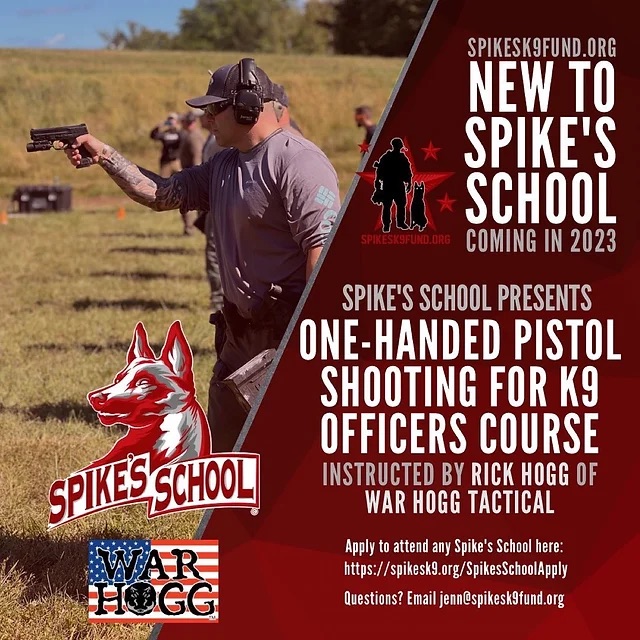
the process
We start the training for one handed pistol shooting by shooting with two hands. We want to ensure the handler has a solid foundation of marksmanship skill.
We shoot the War HOGG self eval, pistol presentations, magazine changes and draw from the holster all two handed, all the while gathering data for the handler in their copy of The Firearms Training Notebook. This way the handler has data to take home and start developing their dry and live fire training sessions to improve their marksmanship skills.
The note section at the bottom of each page is critical for the handler to add any note sfor himself for the live fire or what his K9 is doing during the dry fire training sessions.
one handed pistol shooting
When it comes to shooting a pistol one handed, there are some things the shooter must figure out on their own.
The Forward Step
First, we find out how much of a step forward the shooter needs to take with their firing foot. The reason for the step forward is to release the tension in the latissimus muscle, the one that runs down the side on the outside of your back.
For some shooters it’s a quarter step, some might be half a step or more. It’s all shooter-dependent on their body type. If a shooter is uncomfortable, it is going to be difficult for him to learn.
The other part is the handler must ensure not to take a step that exposes his flank, where he has the least amount of armor.
Techniques
We then move on to show the bent elbow technique for one-handed pistol shooting. The bent elbow allows the shooter to have the same sight orientation of the pistol as if they were shooting with 2 hands.
Next, we show proper hand placement. A lot of shooter’s rest their firing thumb on the slide release when shooting one-handed. The problem is the side will never lock back on that last round.
We show them to place the thumb below the slide release and above the magazine release. We have seen shooter’s release their magazines during live fire because that thumb was pushing on the magazine release.
Support Hand
The final piece to adding realism to the live fire training. We do this by having the handlers hold a 35-pound Brute Force or GORUCK sandbag in their support hand.
We are trying to mimic some of the strength required with a canine verse just normal one-handed pistol shooting.
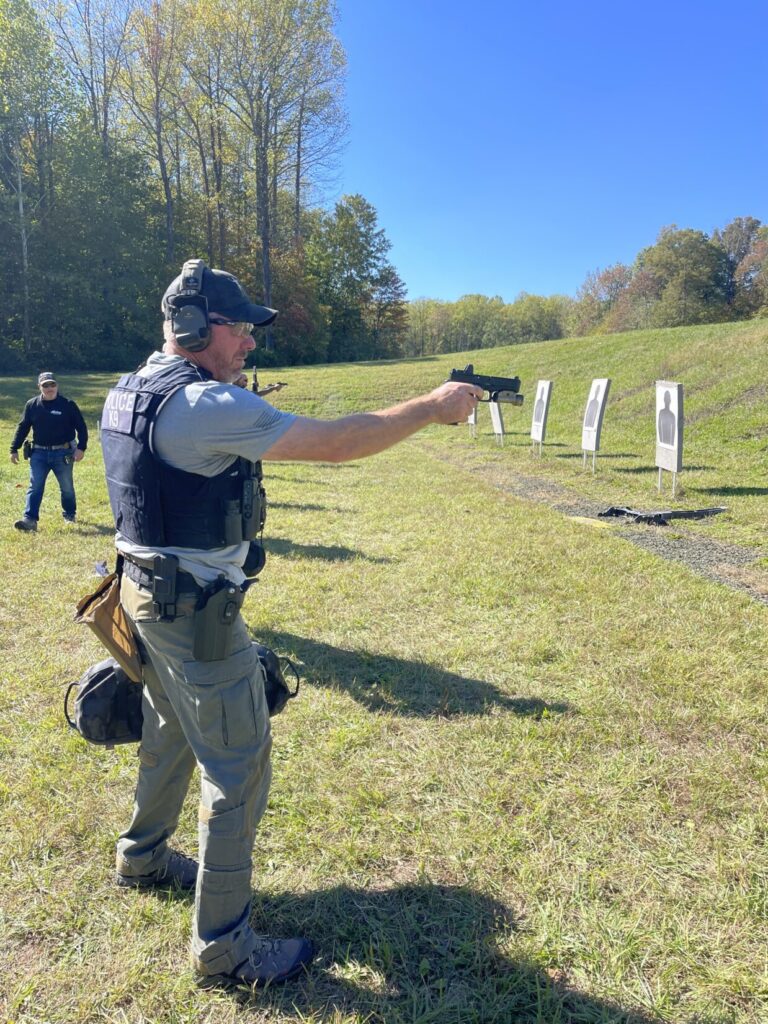
incorporating the canine into the dry fire process
During our one-handed shooting for the K9 officer we will bring the dogs out to expose them to the handlers’ dry fire training. This allows the handler to figure out a couple of things.
First, how is their K9’s obedience? For example, when the dog is placed in a heel or down position, typically on the left side of the handler, does he stay there?
Depending on if the handler is using a leash or hip lanyard this may affect the positioning of the dog. We see some dogs slide in behind their handlers. Nothing wrong with that.
This process is about building a better bond with the team and understanding we are trying to show the dog different looks prior to moving into making the canine neutral to gunfire.
I talk with the students about getting into different firing positions. Again, this is all about letting the dog see different pictures of where the handler might need to fire from.
Loop Leash
I also talk about the “In Honor of Duco” loop leash. We developed the leash in Afghanistan and we build it right here in the USA. The leash has applications for civilians, military, and law enforcement.
Our leash offers the handler an improvised lanyard system which allows them to go two handed on their firearms, if needed, while still offering a standard leash for their regular patrol or obedience work and everyday use.
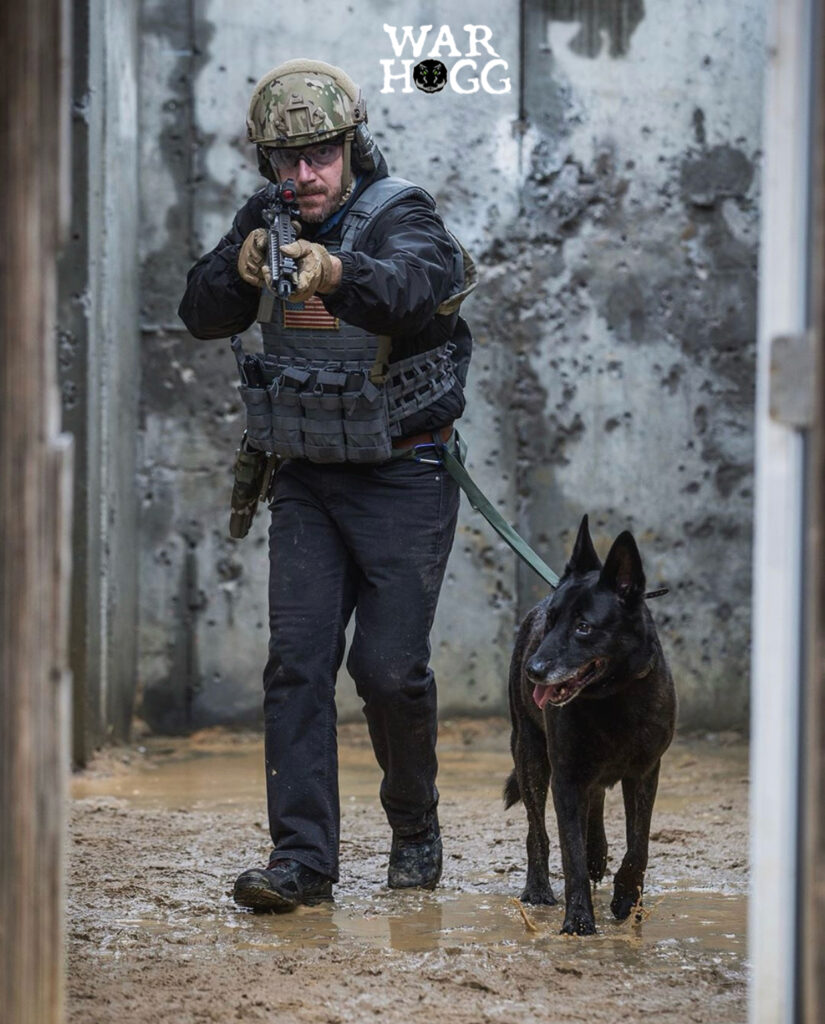
Muzzle, To Start
We have our handlers place muzzles on their K9s to start. I don’t know where everyone’s K9 are at and it helps prevent that accidental bite. I have seen some K9s jump up at the handler’s pistol when drawing from the holster, and some dogs think the magazine falling out during magazine changes are a toy.
The muzzle also helps the possibility of the dog getting the magazines that fall during the dry fire session. For some handlers we ask them if their dog knows “leave it”. The handler can then start adding the command, so the canine knows that not his toy and it paints a better picture for the canine.
K9 Ballistic Vest
We have a Safariland BARK9 ballistic vest for the officers to try out and get awareness of this life saving piece of equipment for their partner. If human officers are wearing armor, why not their canine counterpart?
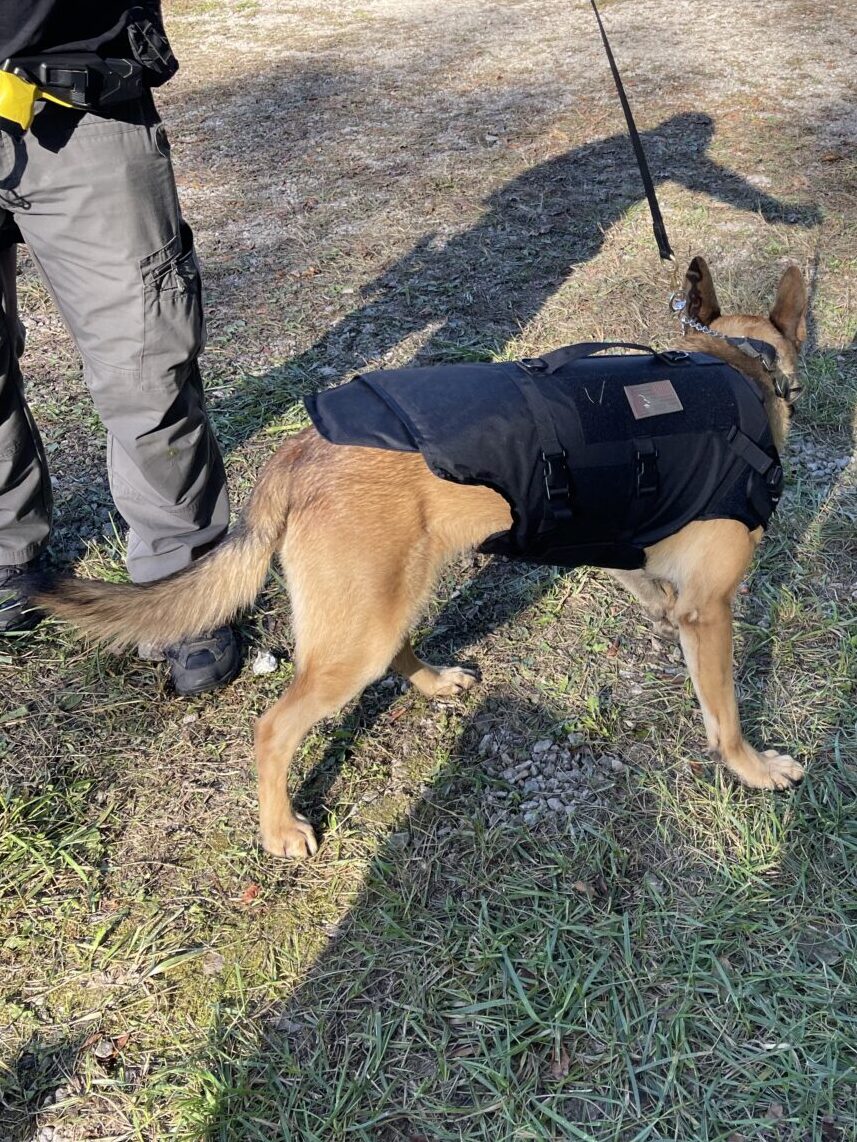
gunfire neutralization for the canine
This process is a very time-consuming process and if done incorrectly can have catastrophic results to the K9. I highly recommend getting some professional training with this portion of K9 training.
We don’t physically do gunfire neutralization in our courses because of the time involved. We talk about the process of how to make their K9 neutral to gunfire, so the handler has an understanding.
The focus of the course is to give the handler marksmanship skills to add to his survivability if he is ever involved in a deadly force encounter with his canine. There have been plenty of handlers bitten by their K9s because their dog was not neutral to gunfire.
In closing, training with a k9 requires a plan
One-handed shooting with a canine is a skill that requires time to train both the handler and K9. They key is having a plan for your dry and live fire marksmanship training.
If your are going to incorporate the dog, he has to be neutral to gunfire. Several factors will determine how much you incorporate the K9 into the overall training program, including your type of dog, your occupation, and your daily routines.
If your agency is interested in a FREE One-Handed Pistol Shooting for the K9 Officer Course, reach out to Spike’s K9 Fund or send us a message via warhogg.com
Train Hard, Stay Safe and see you “On The Range” – Rick





